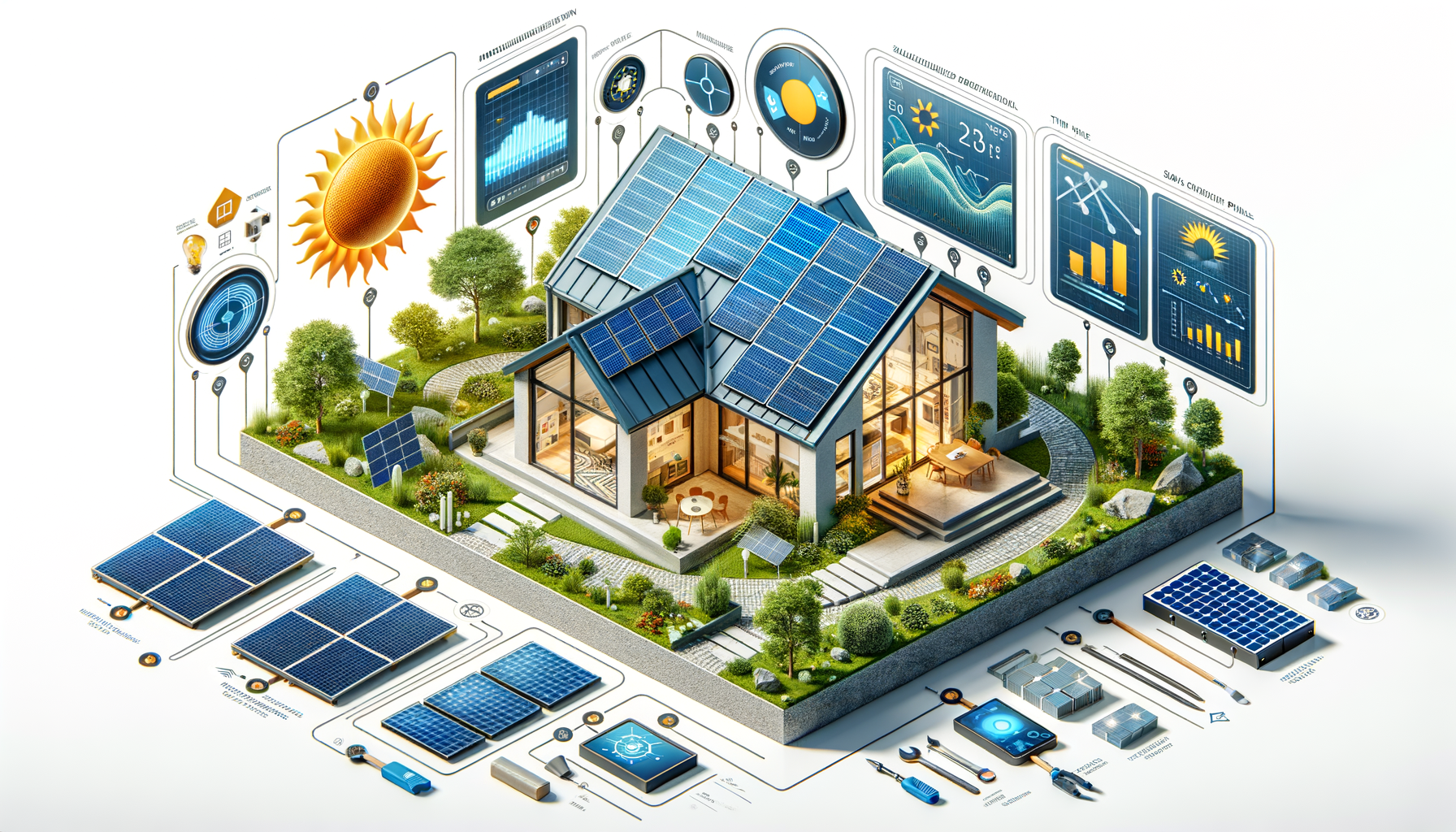Introduction to Solar Panel Installation
As the world increasingly turns towards sustainable energy sources, solar panel installation has become a popular choice for homeowners seeking to reduce their carbon footprint and energy costs. Solar panels, which convert sunlight into electricity, offer a renewable energy solution that is both environmentally friendly and economically viable. Understanding the intricacies of solar panel installation can empower homeowners to make informed decisions about adopting this technology.
Solar panel systems are designed to harness the sun’s energy and convert it into usable electricity for homes. This process involves several components, including photovoltaic cells, inverters, and mounting systems. By exploring the various aspects of solar panel installation, homeowners can gain valuable insights into how these systems work and the benefits they offer. From understanding the initial setup to exploring financial incentives, this guide provides a comprehensive overview of solar panel installation for residential use.
Components of a Solar Panel System
A solar panel system comprises several key components that work together to generate electricity. The primary component is the solar panel itself, which contains photovoltaic cells that capture sunlight and convert it into direct current (DC) electricity. These cells are made of semiconductor materials, typically silicon, which absorb photons from sunlight and release electrons, creating an electric current.
- Inverters: These devices convert the DC electricity generated by the solar panels into alternating current (AC) electricity, which is used by most household appliances.
- Mounting Systems: These are used to secure the solar panels to rooftops or other structures, ensuring they are positioned to capture maximum sunlight.
- Monitoring Systems: These systems track the performance of the solar panels, providing data on energy production and system efficiency.
Understanding these components is crucial for homeowners considering solar panel installation, as each plays a vital role in the overall efficiency and effectiveness of the system. By familiarizing themselves with these elements, homeowners can better assess their energy needs and make informed decisions about their solar investment.
Benefits of Solar Panel Installation
Installing solar panels offers numerous benefits for homeowners, both environmentally and financially. One of the most significant advantages is the reduction in energy costs. By generating their own electricity, homeowners can decrease their reliance on the grid, leading to lower utility bills. Additionally, many regions offer incentives, such as tax credits and rebates, to encourage solar adoption, further enhancing the financial appeal of solar panel installation.
Environmentally, solar panels contribute to a cleaner and more sustainable future. By harnessing renewable energy from the sun, solar panels help reduce greenhouse gas emissions and decrease the reliance on fossil fuels. This shift towards renewable energy sources is essential in combating climate change and promoting environmental sustainability.
Moreover, solar panel installation can increase property value. Homes equipped with solar panels are often seen as more attractive to potential buyers, as they offer long-term energy savings and a reduced carbon footprint. This added value can make solar panel installation a wise investment for homeowners looking to enhance their property’s marketability.
Challenges and Considerations
While the benefits of solar panel installation are numerous, there are also challenges and considerations that homeowners should be aware of. One of the primary considerations is the initial cost of installation. Although prices have decreased over the years, the upfront investment can still be significant. Homeowners should explore financing options and incentives to help offset these costs.
Another consideration is the suitability of the property for solar panels. Factors such as roof orientation, shading, and available space can impact the efficiency of a solar panel system. A professional site assessment can help determine the feasibility of solar installation for a specific property.
Additionally, homeowners should consider the long-term maintenance of the system. While solar panels are generally low-maintenance, regular cleaning and inspections are necessary to ensure optimal performance. Understanding these challenges and considerations can help homeowners make informed decisions and plan effectively for solar panel installation.
Conclusion: Embracing Solar Energy
As the demand for renewable energy solutions continues to grow, solar panel installation presents an attractive option for homeowners seeking to reduce their environmental impact and energy costs. By understanding the components, benefits, and challenges associated with solar panels, homeowners can make informed decisions about adopting this sustainable technology.
Embracing solar energy not only contributes to a cleaner environment but also offers financial savings and potential property value increases. As technology advances and costs continue to decrease, solar panel installation is becoming more accessible to a wider audience. By exploring solar energy solutions, homeowners can take a proactive step towards a more sustainable and energy-efficient future.




Leave a Reply